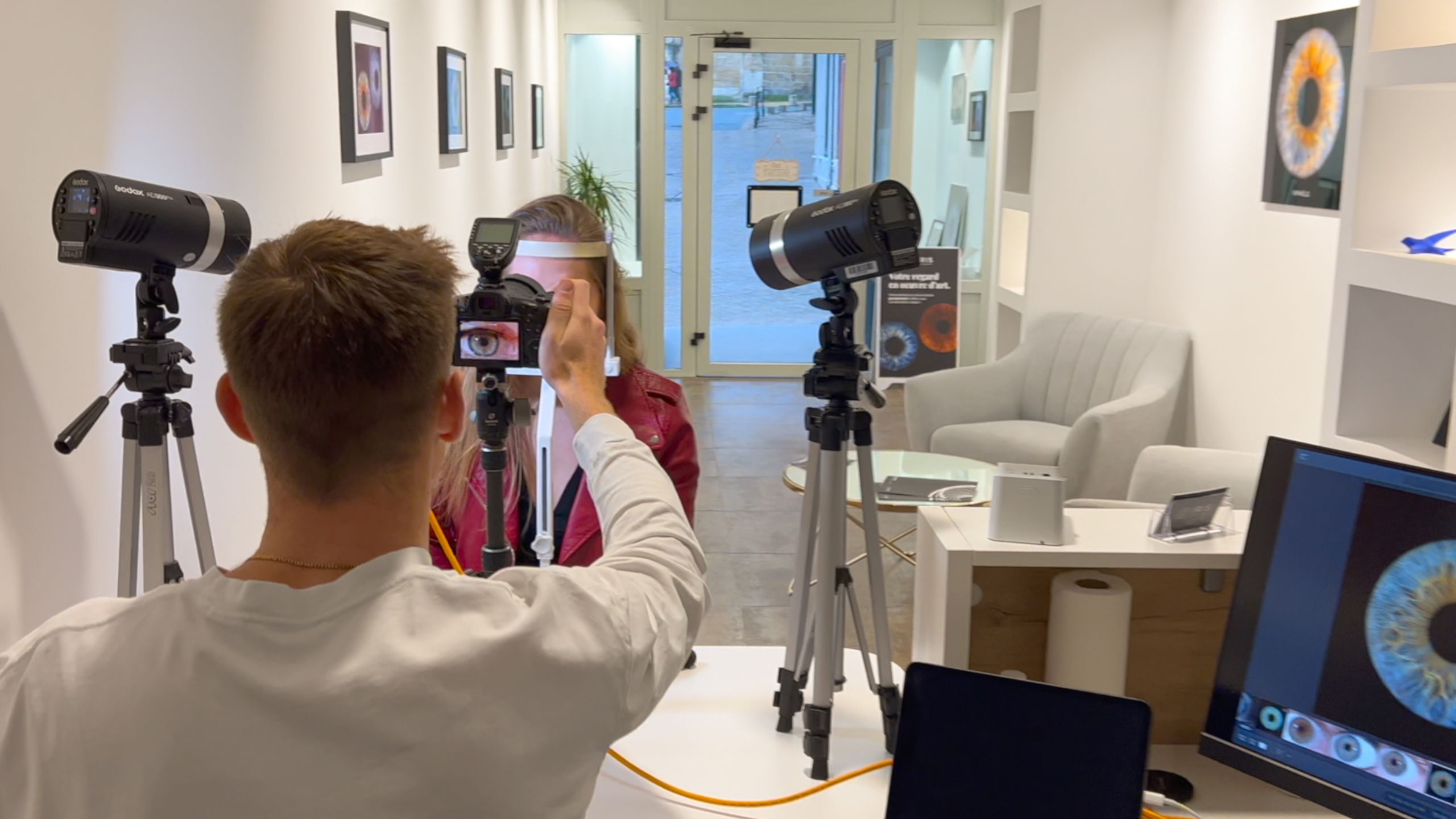The 4 Gears to Photograph a Human Iris
If you have ever visited an iris photography shop run by a franchise, you probably thought that their technical equipment requires a tremendous investment.
That is because franchises cover their equipment with boxes. It makes the whole look like medical equipment. The kind of equipment you would find in an ophthalmologist’s office. Do you really need a franchised Iris PhotoBox to take high-quality Iris photos? Absolutely not.
Let’s break down the reality of the “iris photography machine”.
The truth is that you will always find the same equipment under the box. Whatever the franchise is.
The only things that can differ are the brand they chose or the types of equipment.
The equipment is composed of a camera, a macro lens, a lighting system, and a chin rest.
The camera
Obviously in Iris Photography, it’s all about photography. That is the first thing you will need to search and learn about. Which brand, which type of camera, and which model? Those are questions to ask yourself upfront. It will be the core of your future business. There also comes the importance of parameters. It’s not just the camera that will make your iris pictures stand out, but also which parameters you use.
At Iris Photographie, I shoot with a Canon R5 coupled with a 100mm Macro Lens from Canon.
The macro lens
The iris can range between 11 to 13mm. As a consequence, you will need the lens that is most relevant for this type of photography. We are talking about macro lens. Just as for the camera, you will need to choose carefully which brand and which model of macro lens you want to couple with it.
Lighting
You need to learn about and choose which equipment you will use to light your client’s iris to bring their eyes’ color the best.
Lighting is one of the most important things to learn about and experiment with. From what I have seen, though, it is not where most independent photographers focus their attention when trying to do iris photography. You have to study the influence of light on the iris color, the pupil size, or how it influences all the parameters of your camera. Ultimately, photography is all about creating images by recording light.
In learning Iris Photography, you must spend a decent amount of your research on light.
Lighting is, as we just said, the core of photography. Thus, each parameter on your camera or lens plays with light and, consequently, plays with iris colors.
Remember that iris colors are very important because there are what is the most remarkable in people’s eyes. That’s why we say, “She has beautiful green eyes, “not “She has incredible eye texture.” Understanding light and how your camera parameters influence it is a high stake in Iris Photography. The most important parameters to experiment on are white balance, ISO, shutter speed, and aperture. Then you can play with all the other parameters in your camera and lens to improve your photograph of iris.
Stability
There are many ways to stabilize your client’s head to reduce micro-movements. The best is to use a chin rest. That’s an initial investment, but trust me, it will be worth it. You can also start by using books or creating a DIY chin rest.
Those are the four main pieces of equipment you need to photograph a human iris. You will also need the small gear that goes with it, such as cables, batteries, tripods, etc. Once you have learned about the previously mentioned topics (equipment, lighting, and parameters), you will need to focus on how you will do the photo shoot.
The client is, of course, another moving parameter. You will not photograph an older person’s iris like a 5-year-old’s one. You will need to prepare your studio accordingly, welcome your client and explain the concept intelligibly. You then need to explain to your clients how you will do the photo shoot and then do it.
After that comes the sale and the post-sale. You have to think about all of that as well as the client’s potential concerns. I strongly advise you not to neglect this part as it can make or break your shop’s reputation and success.
Visit Iris Photography Masterclass to learn more about Iris Photography.
If you want to learn iris Photography and earn $10,000 per month, then enter your email at the bottom of the Home Page.
– Andy Costes, Founder of Iris Photographie


